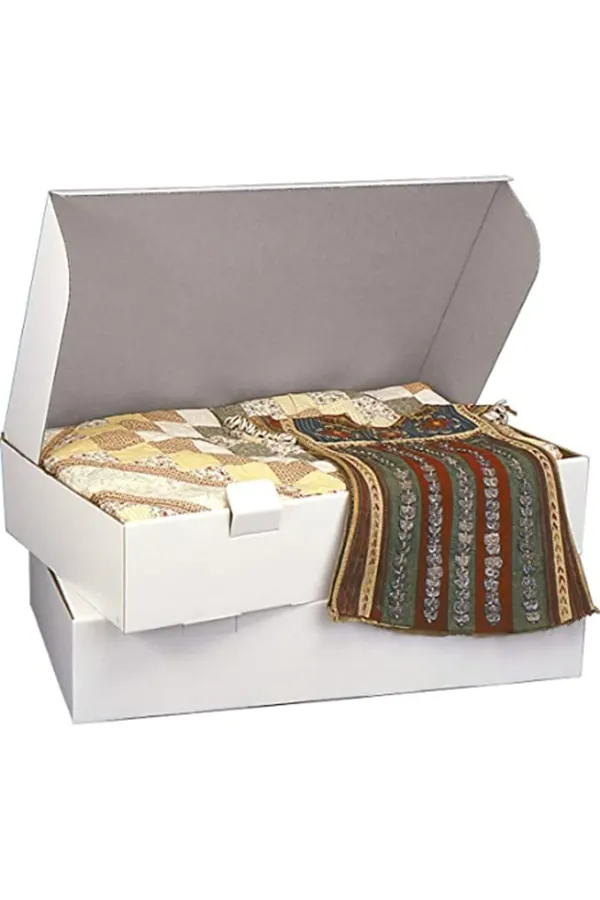I’m not emotionally ready to put my shorts, tanks, and sandals away just yet — but the calendar tells me it’s time to start thinking about it. Storing clothes seasonally is a critical step in managing my wardrobe. At the end of summer, I need to create space in the closet scarves, puffer jackets, fuzzy socks, jeans, and joggers. Plus, pulling these half-forgotten, cold weather staples out of the attic is kind of rewarding, like going shopping without the downsides: No fitting room visits and no charges on my credit card.
My rule is that I don’t pull out the next season’s garments until I’ve packed up this season’s pieces. That keeps my closet more organized, but admittedly can create some timing issues. I live in the Midwest, where the temperatures can go from 90 to 50 to 90 again during these transitional seasons. In eight years as a Missouri resident, I’ve managed through that OK by holding back a select pair of shorts in fall or a couple warm sweaters in spring.
The bulk of my summer gear, though, is destined for a storage bin soon.
What is the best way to store clothes?
Let’s start with the basics. What is the best way to store clothes? The actual act of storing clothes isn’t terribly complicated. Here are some guidelines:
- Clean garments according to label instructions before putting them in storage.
- Choose a place that’s cool, dry, and dark for storing clothes.
- Optionally, make a list of every garment you are storing. That way, you can check the list before you buy new clothes.
- Pack your clothes lightly into a container with a lid. I’ve used plastic bins with lids for seasonal storage, though you could acid-free wardrobe boxes if you are storing really expensive pieces. Alternatively, you could use a cardboard box, but take the extra step of wrapping the clothes in acid-free tissue or a cotton sheet. Avoid vacuum bags because they’re airtight and your garments need some air circulation. Without it, stains and smells worsen and clothes made of natural fibers can lose their shape.
- Sandals and flipflops don’t too much special treatment; just arrange them neatly so any embellishments don’t fall up. In the spring, you’ll want to lace up your winter shoes and stuff them with tissue paper to retain their shape. You can use boot trees for boots, of course. Organize them neatly into a plastic container with a lid.
- Know that fur coats, wedding dresses, and leather garments require special care. Try these resources for specifics: how to store a fur coat, how to store a wedding dress, and how to store your leather jacket.
Storing clothes FAQs
Those are the general guidelines, but the nuances are easier to capture with a concise list of storage FAQs. Here are six questions about storing clothes, answered.
How can I protect my clothes in storage?
There are two ways to protect your clothes in storage. One, choose the right location. Avoid spots that are damp or bright. Dampness will give your garments an icky, mildewy smell. And too much artificial light or sunlight will cause discoloration. And two, you can store your clothes in acid-free garment boxes. Acid in regular cardboard boxes can lead to staining. Alternatively, you can wrap your clothes in cotton sheets and store them in a plastic bin.
Do I need to use mothballs to store my clothes?
Moths like animal fibers, like wool, silk, and cashmere. So you can use mothballs with your cashmere sweaters and silk scarves, but you do not need mothballs for garments made of synthetic materials.
You can alternatively use cedar balls, which smell nice and help protect against mildew as well as bugs and odors.
If you do use mothballs, follow directions carefully. You need to select the right size ball for the container and keep your extras away from kids and pets. Also know that mothballs require an airtight environment.
Can I store clothes in a suitcase?
You can store clothes in a suitcase as long as you keep said suitcase in a suitable location. Don’t overpack and take the extra step of wrapping or covering your clothes with a cotton sheet. Suitcases are great for storing your summer shoes, too!
How long do clothes last in storage?
If you pack your clothes up properly, they can last a very long time in storage. Think about wedding dresses — when you have them professionally boxed, they’ll hold up for decades.
For clothes that aren’t professionally boxed, make a plan to check in on their condition once a year. That’ll help you spot issues that aren’t obvious, such as damp conditions or a bug infestation.
Do clothes get moldy in storage?
Yes, clothes can get moldy in storage. You’ll probably smell the issue before you see it, but mold can cause staining, too. If you pull your clothes out of storage and see or smell mold, try washing them with oxygen bleach and detergent.
How do you keep clothes from yellowing in storage?
Keep clothes from yellowing in storage by:
- Wash them before packing, even if you think they’re already clean.
- Make sure garments are 100% dry before you pack them.
- Wash your hands with soap before handling your newly washed clothes. Lotions on your hands can stain stored clothes.
- Wrap your garments in cotton sheets before placing them in the storage container.
Can I store clothes in the attic, garage, or basement?
It depends on the moisture and light levels of your attic, garage, or basement. I store my seasonal clothes in the attic without issue. But I’ve noticed that if I leave clothes up there too long, like for a year, they get musty. Basements are the most likely to be damp, while your garage may be excessively dusty. If those three places are your only options, choose the one that’s driest and has the most moderate year-round temperature.


